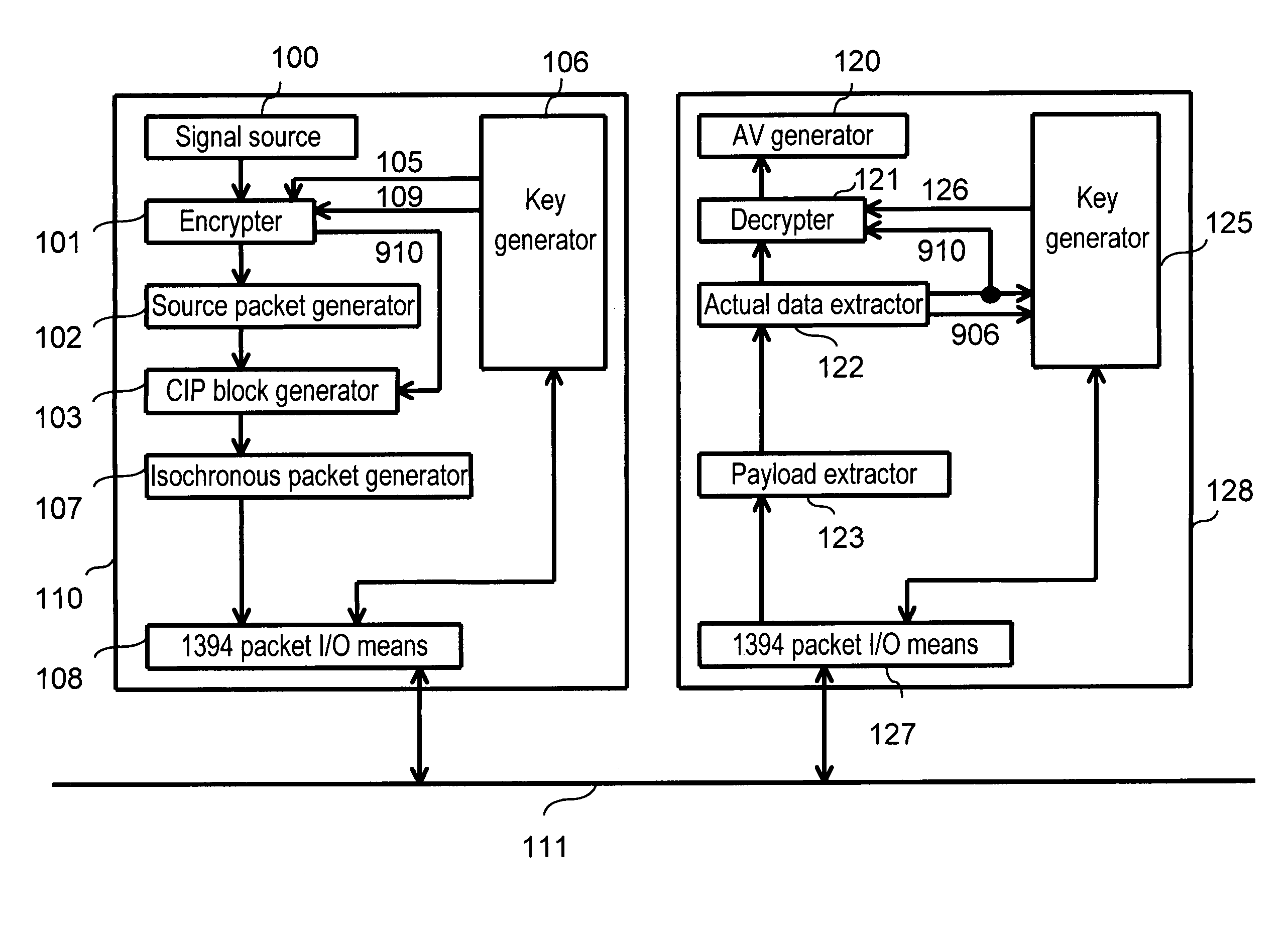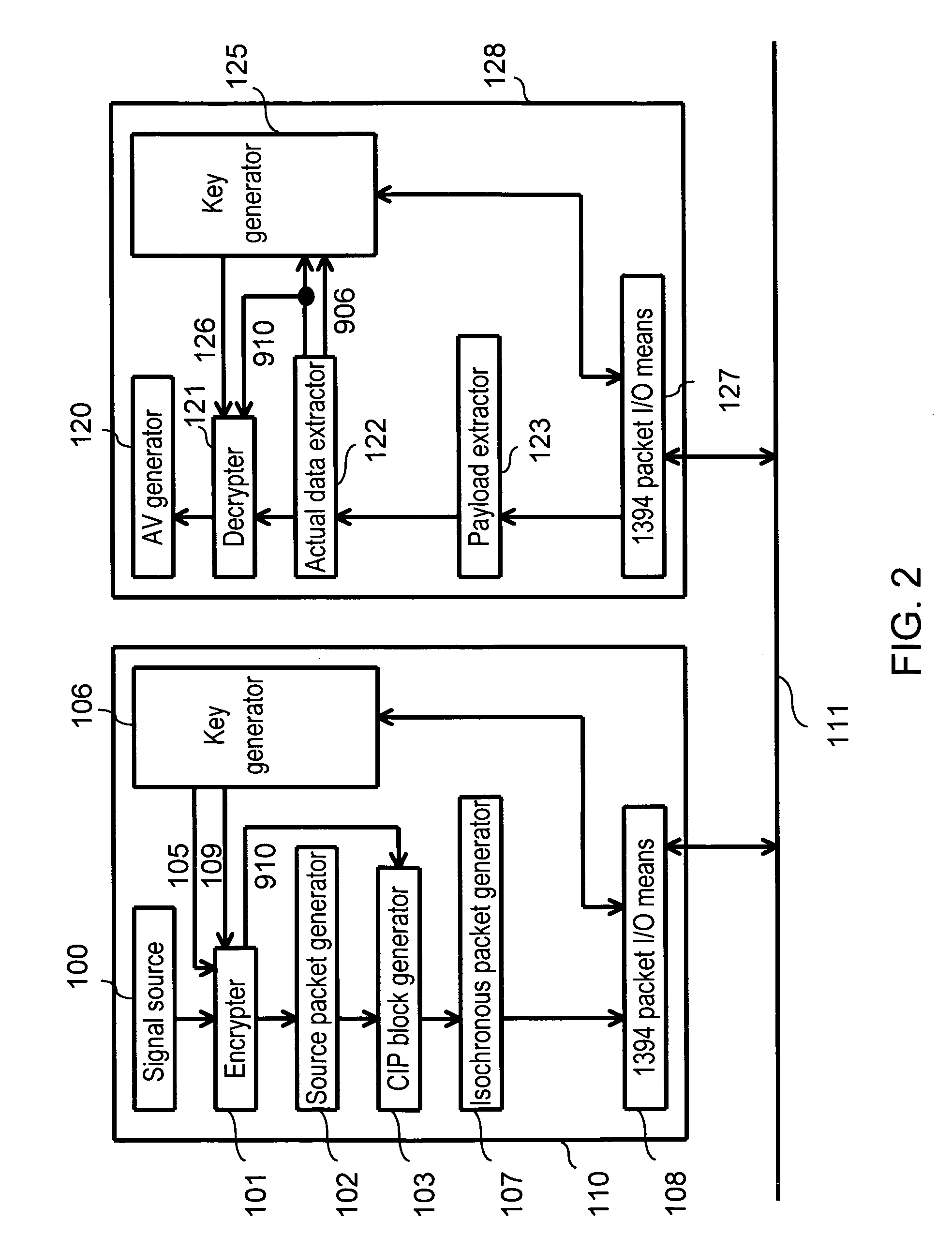Data transfer method
a data transfer and data technology, applied in the field of digital data transfer methods, can solve the problems of inability to identify the device transmitting the device receiving the encrypted isochronous packet may not operate properly, and the inability to asynchronous communication such as queries to the sending device is disabled, so as to achieve simple procedures, prevent erroneous operation, and ensure compatibility
- Summary
- Abstract
- Description
- Claims
- Application Information
AI Technical Summary
Benefits of technology
Problems solved by technology
Method used
Image
Examples
Embodiment Construction
[0024]A preferred embodiment of the present invention is described next with reference to drawings.
[0025]FIG. 1 shows a format of the payload of an isochronous packet to be transferred in the preferred embodiment of the present invention. The preferred embodiment is one example of the transfer of a TSP (Transport Packet) in accordance with MPEG (the Moving Picture Expert Group) specifications. The ENC (hereafter referred to as encryption status) 910 indicates whether the actual data 905 is encrypted or not.
[0026]FIG. 2 shows the relation between sending and receiving devices in the preferred embodiment of the present invention. A sending device 110 and receiving device 128 are coupled via an IEEE 1394 bus (hereafter referred to as a 1394 bus) 111.
[0027]First, the functions of each block in the sending device 110 are described.
[0028]A signal source 100 outputs an MPEG transport packet TSP (not illustrated) in an 188 byte unit, which will be sent via the 1394 bus 111, to an encrypter ...
PUM
 Login to View More
Login to View More Abstract
Description
Claims
Application Information
 Login to View More
Login to View More - R&D
- Intellectual Property
- Life Sciences
- Materials
- Tech Scout
- Unparalleled Data Quality
- Higher Quality Content
- 60% Fewer Hallucinations
Browse by: Latest US Patents, China's latest patents, Technical Efficacy Thesaurus, Application Domain, Technology Topic, Popular Technical Reports.
© 2025 PatSnap. All rights reserved.Legal|Privacy policy|Modern Slavery Act Transparency Statement|Sitemap|About US| Contact US: help@patsnap.com



